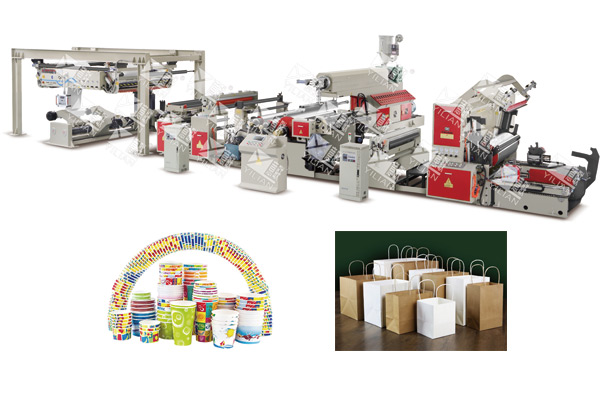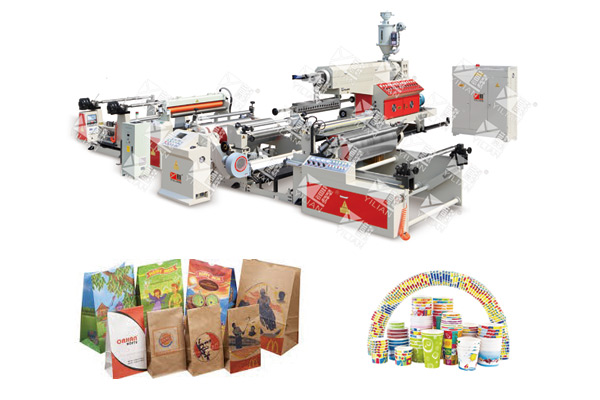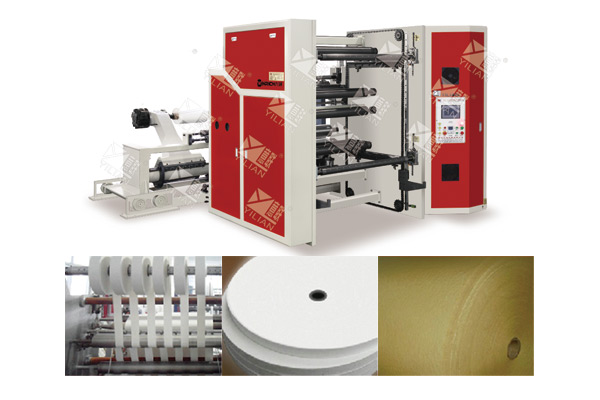What is the process of extrusion lamination machine?
Datetime: 7/10/2025 9:24:00 AM Visit: 1246
Extrusion lamination machines play a crucial role in the packaging, textile, and industrial material industries. They combine multiple layers of substrates—such as films, foils, and papers—with a molten polymer to create high-performance laminated materials. This process enhances durability, barrier properties, and aesthetic appeal, making extrusion lamination essential for food packaging, medical supplies, and flexible packaging solutions.
I.How Does an Extrusion Lamination Machine Work?
The extrusion lamination process involves bonding multiple layers of material using a molten polymer (typically polyethylene, PP, or EVA). Here’s a step-by-step breakdown:
1. Unwinding the Substrates
The process begins with two or more substrate rolls (e.g., aluminum foil, plastic film, or paper) being fed into the machine.
These substrates may be pre-treated (corona treatment) to improve adhesion.
2. Extrusion of the Polymer Resin
Polymer pellets are fed into an extruder, where they are melted at high temperatures (typically 200–300°C).
The molten polymer is then forced through a flat die, forming a thin, uniform film.
3. Lamination Process
The extruded polymer film is immediately pressed between the substrates using a chill roll and a pressure roller.
The combination of heat and pressure ensures a strong bond between layers.
4. Cooling and Winding
The laminated material passes over cooling rollers to solidify the polymer.
Finally, the finished product is wound into rolls for further processing or cutting.
II.Key Components of an Extrusion Lamination Machine
1.Unwinder & Rewinder – Feeds and collects substrate materials.
2.Extruder – Melts and pumps the polymer resin.
3.Flat Die – Shapes the molten polymer into a thin film.
4.Lamination Unit – Combines substrates with the extruded polymer under pressure.
5.Chill Rolls – Cools the laminated material to ensure stability.
6.Control System – Ensures precise temperature, speed, and tension regulation.
Applications of Extrusion Lamination
Extrusion lamination machines are widely used in:
Flexible Packaging – Food pouches, snack bags, and liquid packaging.
Medical Packaging – Sterile barrier films for medical devices.
Industrial Materials – Protective films, insulation layers, and automotive textiles.
Consumer Goods – Laminated fabrics, labels, and decorative films.
Advantages of Extrusion Lamination
Superior Bond Strength – Provides durable, high-performance laminates.
Enhanced Barrier Properties – Improves moisture, oxygen, and UV resistance.
Cost-Effective – More efficient than solvent-based lamination methods.
Versatility – Compatible with various substrates (plastic, foil, paper).
Conclusion
Extrusion lamination machines are indispensable in modern manufacturing, offering a fast, efficient, and reliable way to produce multi-layered materials. Whether for food packaging, medical applications, or industrial uses, this process ensures high-quality, functional laminates with excellent performance characteristics.
By understanding the extrusion lamination machine process, manufacturers can optimize production and develop innovative packaging solutions to meet industry demands.










